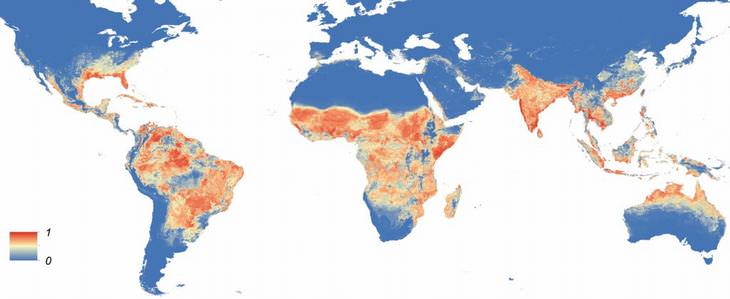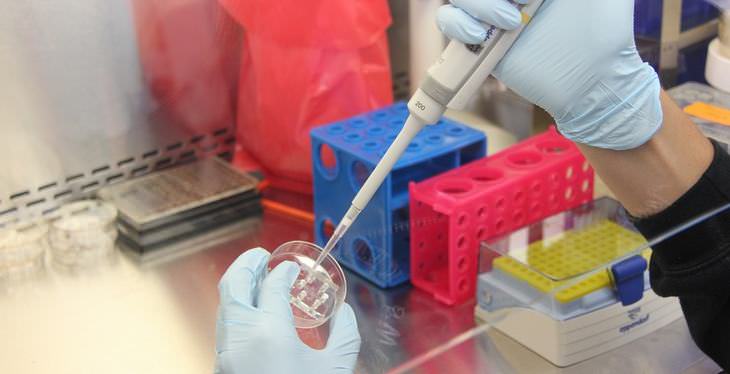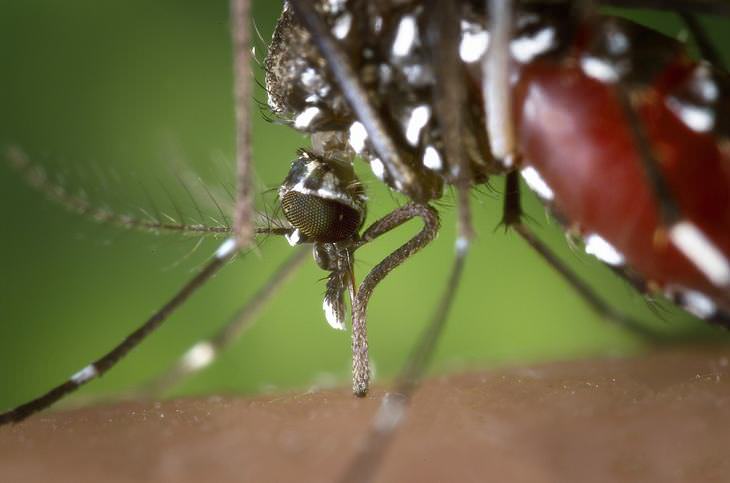

 Zika is particularly dangerous for pregnant women, as unborn infants are susceptible to massive birth defects as a result of infection
Zika is particularly dangerous for pregnant women, as unborn infants are susceptible to massive birth defects as a result of infection Zika is also transmitted through sexual contact
Zika is also transmitted through sexual contact Scientists have given us hope with their new discovery of IFITM3's resilience against Zika
Scientists have given us hope with their new discovery of IFITM3's resilience against Zika A Yellow Fever mosquito (Aedes Aegyptii): the most common carrier of the Zika Virus
A Yellow Fever mosquito (Aedes Aegyptii): the most common carrier of the Zika VirusH/T: secondnexus.com

Blood Test Breakthrough Transforms Leukemia Diagnosis
This research demonstrates that rare circulating stem cells in blood carry the same diagnostic information as bone marrow samples, enabling doctors to identify disease progression months before clinical symptoms appear.

INCREDIBLE: UK Researchers May Be Close to Beating HIV
HIV is a debilitating disease that affects 37 million people around the globe. The great news is that a cure may be just around the corner.

Can We PREVENT Type 1 Diabetes?
The study's findings point toward developing a simple blood test that could detect the immune failure leading to type 1 diabetes before insulin-producing cells are permanently lost.

Scientists Have Just Reversed Alzheimer's in Mice. Wow.
The future treatment of Alzheimer's disease looks promising thanks to this new study.

The Worst Epidemics in US History
This list contains the 9 worst epidemics the US has faced, and showcases the advancement in treatment over the years.

A Simple Blood Test Could Detect Alzheimer Years Earlier
A few years ago, researchers have discovered a gene that could revolutionize how we diagnose Alzheimer's disease - and they found it by asking a simple question: Why do some people's brains succumb to the disease while others don't?

Ever Hear of the 54321 Shopping Method to Buying Groceries?
Grocery shopping has become increasingly stressful as prices continue to climb. Many shoppers find themselves struggling to balance their budgets while still putting nutritious food on the table. But a straightforward shopping strategy is helping peo
 4:09
4:09
Goodbye, Diane: Remembering Diane Keaton
A look back at the extraordinary life of a singular artist who has left an indelible mark on Hollywood and our hearts.

The Mandela Effect: How Collective False Memories Occur
When masses of people share false memory that didn't actually occur, it's called the Mandela Effect. Learn more about this heavily debated topic.

These Words Wouldn’t Exist Without These 10 Famous Authors
Learn of 10 commonly-used English words that were coined by famous authors and philosophers.

The Best Movies That Lost Best Picture at the Oscars
Here’s a look at some of the most memorable films that missed out on Best Picture at the Oscars.

8 Ordinary English Words With Surprisingly Spicy Origins
The origins of all these 8 seemingly innocent words - e.g. gymnasium, avocado, and nice - are not for the faint of heart, as they're quite naughty!

Discover How This Board Game Saved Thousands During WWII
Find out how a simple board game helped around 20,000 British prisoners escape from German camps during World War II.

Eccentric Rulers: 6 Bizarre Monarchs Throughout History
These eccentric monarchs throughout history have quite a story to tell...

6 Creepy Mysteries the World Never Solved
There are some mysteries that, despite scientists’ best attempts, still remain unsolved to this day. Here are 6 such mysteries.
 3:25
3:25
Saxophone Magic: 15 Unforgettable Solos
These renditions of epic sax solos are just perfect.

8 Facts You Learned at School that Are No Longer True!
The passage of time leads things that were once accepted as facts to actually be proven as incorrect. Here are 8 supposed facts that aren’t really true.

Mysteries From Ancient History Science Still Can’t Explain
From buried treasures to undeciphered languages, this list contains 8 perplexing ancient mysteries.
 18:31
18:31
The Most Beautiful Asian Royal Crowns
This video will show you 10 famous crowns from Asia and their fascinating histories.

Amazing History: The Man Who Took Down a Plane With a Gun
Owen Baggett is the only man ever to live known to have shot down a fighter plane using nothing but a handgun. Read his incredible story right here.

8 Bizarre Customs From Not-So-Long Ago
Here are 8 practices that used to be viewed as normal in the past, but today they seem bizarre, dangerous... or both!

A Nostalgic Trip to the Major Events of the 30's and 40's
Take our hand and lets go on a Quick nostalgic trip to the main events the defined the 30's and the 40's.

12 Love Stories of Couples that Grew Better with Age
12 couples share their stories of growing old together, alongside a dose of worldly wisdom.
 10:15
10:15
This Animal Video is Sure to Turn a Smile Into a Grin!
Get ready to wear a big smile and a giggle, this video will make your day!

11 English Words You Didn't Know Were Actually Spanish!
Learn about the Spanish etymology of 11 words in American English (and a bonus at the end!)

The 1900s Had Some STRANGE Predictions About Today...
People from the past centuries have made some very bizarre predictions of the 21st century, even famous scientists and writers got things completely wrong!

10 English Words That Come From Native American Languages
Some seemingly ordinary English words, such as barbecue, raccoon, and even squash, actually come from Native American languages and it's fascinating!
 21:24
21:24
True Crime Story: The Shotgun Booby-Trap
The case of Bertha Briney and the house that was booby trapped with a shotgun...

14 Famous Disappearances That Still Baffle Investigators
These fanous disappearances haunt our collective imagination.
 4:56
4:56
History’s First Author Is Largely Unknown, Who WAS She?
Meet the First Author in History - Enheduanna, an ancient Sumerian high priestess with a tragic and heroic life story...

10 Insightful Greek Proverbs You've Never Heard Of
Take a look at some common Greek proverbs that are full of wisdom.

24 Amazing Antarctica Facts to Thrill Your Friends With
Antarctica is the place that people know least about. But after you read this, you'll be able to amaze them with some stunning facts.

How Much Influence Do Secret Societies Have? Find Out Here
Learn all about six of the most famous secret societies that seem to have quite a degree of influence even today.

These Huge Hairdos Will Make You Glad It's Not the 1960s!
People have always been extremely dedicated to their appearance, and nothing exemplifies this better than 1960s hairstyles. Take a look at this huge hairdos!

The Dark and Fascinating History of the Romanov Family
For more than three hundred years, the Romanov family had absolute power over Russia, this is their fascinating story.

Don’t Fall For These Popular Food Safety Myths
There are a lot of misconceptions about food safety. Here are some common ones you shouldn’t believe.

12 Misnomers That Have Been Fooling Us All Our Lives
The true stories behind 12 popular misleading misnomers are explained here.

These Quotes Are Often Misused or Misunderstood By People
There are many famous quotes that get used continuously by people around the world, but that doesn't necessarily mean that they're being used properly.
 9:37
9:37
What Did the Future Mean to 1958 High Schoolers?
Peep into a high school debate from 1958 about the teenager's future. Are their arguments still relevant today?

14 Fascinating Museum Treasures That Stole the Show
These 14 museum finds are truly impressive.

6 Treasures Owners Unwittingly Used As Household Goods
Sometimes, a prized treasure is hiding right under the noses of unsuspecting citizens. Some precious antiques are even being put to good use as household items.

18 Amazing Facts About Very Well-Known Brands
There are some really interesting and amazing facts about some of the world's most well-known brands, and you're about to learn 18 of them right now!

The 10 Cult Movies Every Film Enthusiast Should Watch
These cult classics will change how you view cinema.

15 Vintage Toys All '60s and '50s Kids Know and Love
Ready to revisit 15 of the most loved and remembered vintage toys from the '60s and '50s?
 9:01
9:01
Learn With a Smile: A Funny History of Japan
If you've ever wanted a crash course in Japanese history without it being too dull - this is the perfect video for you.
 3:50
3:50
Why Did Hitler Want to Destroy This New York Basement?
Deep below the halls of New York's Grand Central Terminal theres a secret basement that could have changed the outcome of the second world war...
 3:47
3:47
This Truly is One of the Best Elvis Performances
Enjoy this blast from the past: the king of rock and roll, Elvis Presley sings his famous song ‘My Way’ in a 1973 concert.

Work Safety? Never Heard of It!
The people involved in these construction fails and work safety violations have never heard of the phrase “Safety First!”
To enable your Ad-Free Subscription, please fill the fields below
Your subscription was successful, now you can enjoy an ad-free experience!! Note: To make sure you get no ads, please make sure to log in to your account. If you are logged in already, then refresh the page. The subscription can be cancelled at any time.


